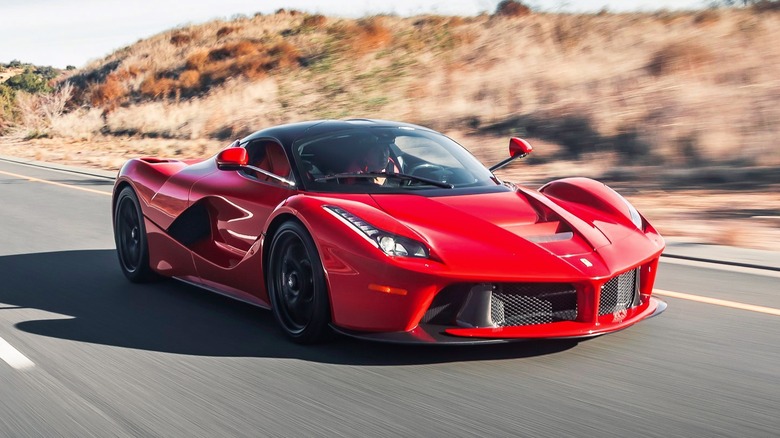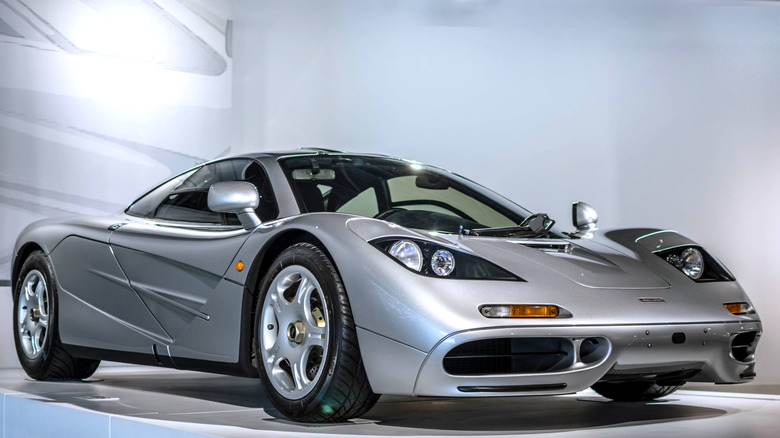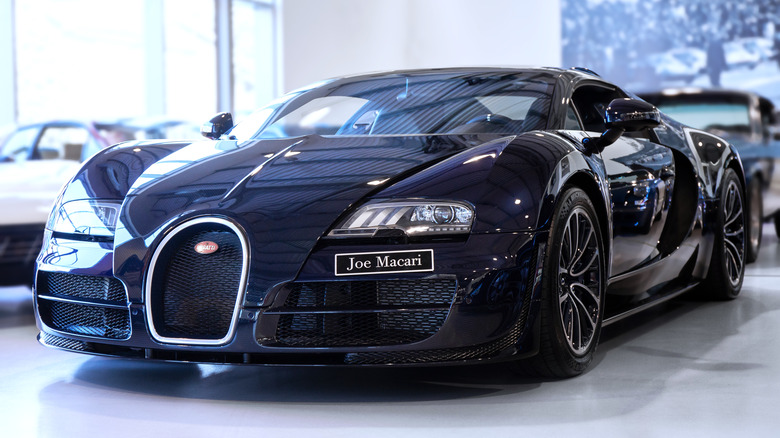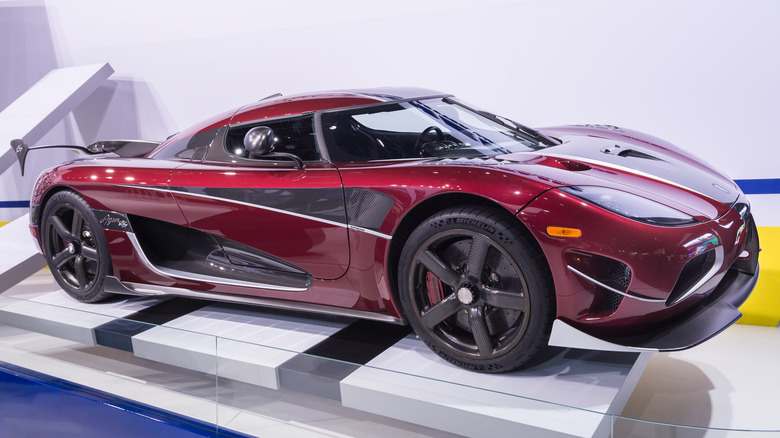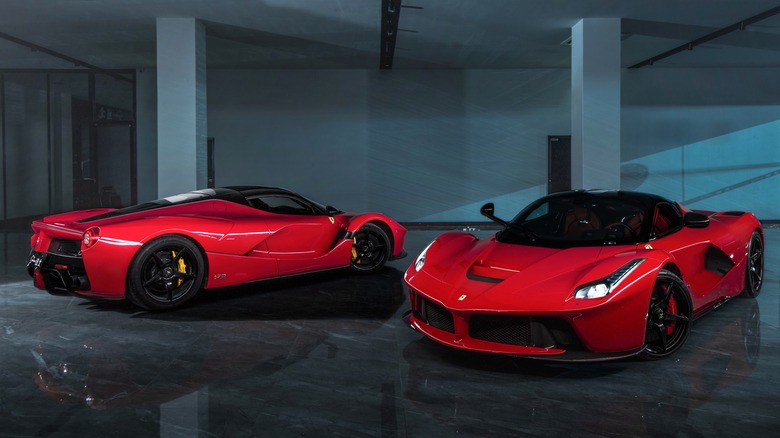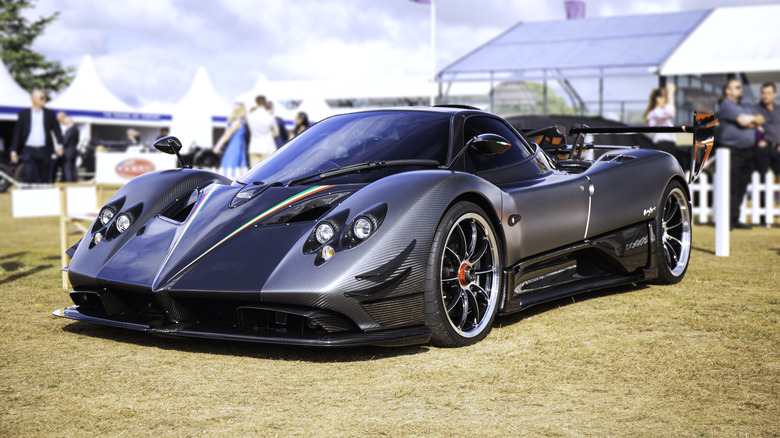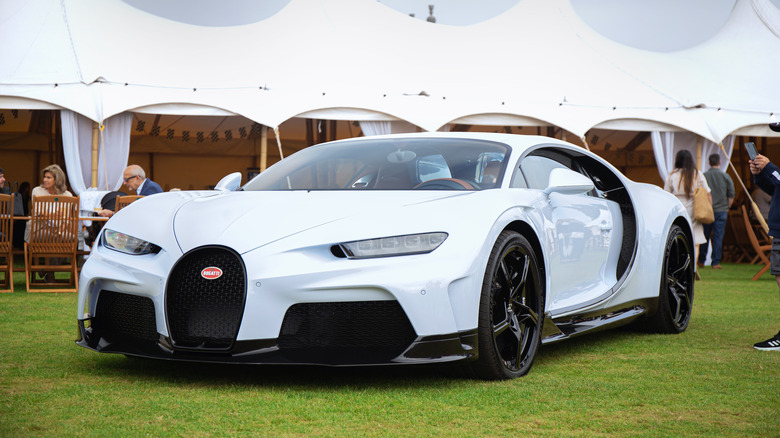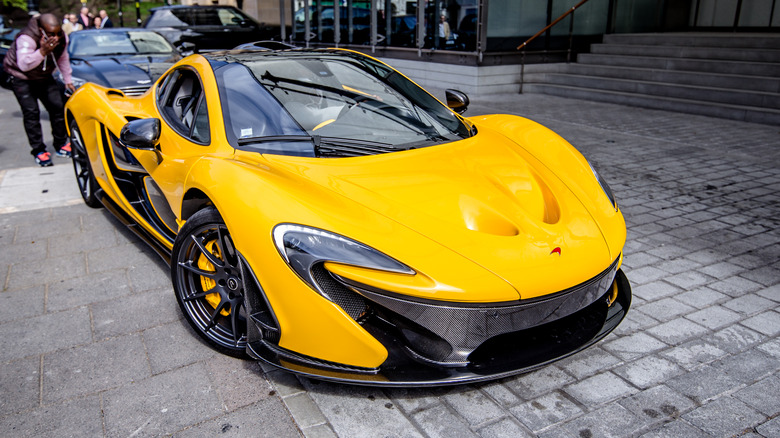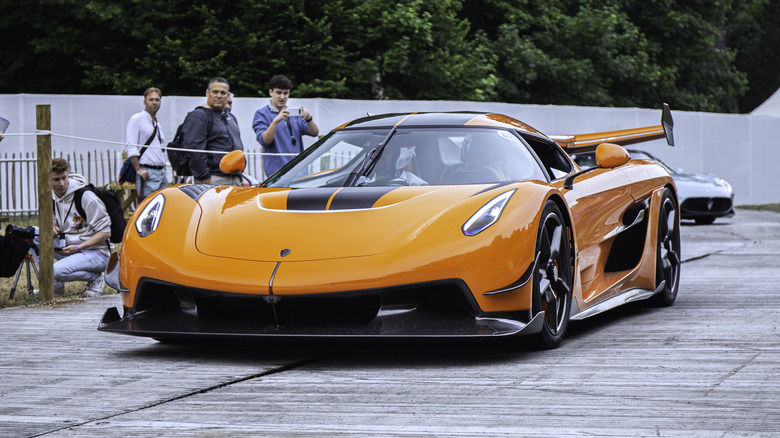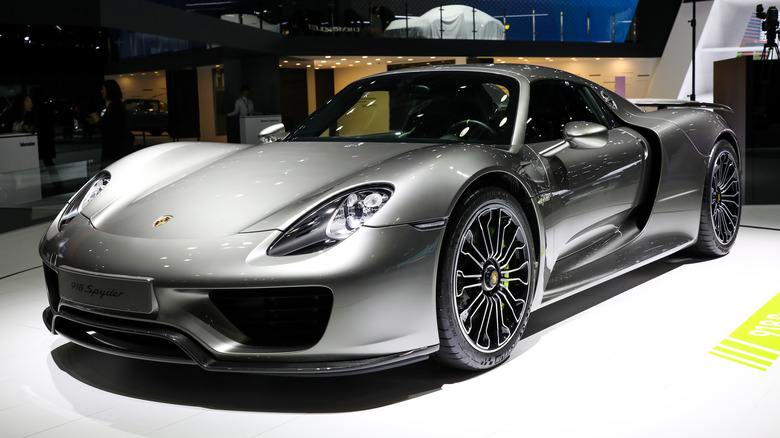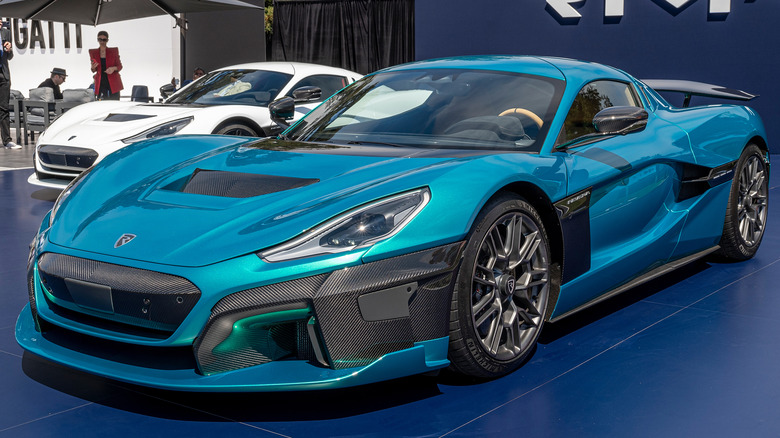10 Best Hypercars Of All Time
Hypercars symbolize the pinnacle of road car performance, boasting jaw-dropping acceleration, eye-catching designs, and usually, a sky-high price tag to match. They represent the very best of what the world's leading manufacturers can create within the boundaries of road regulations. For years now, there's been a battle raging to see who can make the fastest and most powerful machine. There's no clear winner in that race, as every year a different manufacturer claims to have made something even more capable than before, but the results of these ongoing efforts to beat each other are the real win for collectors and enthusiasts.
With the switch to electric power now fully underway, it seems inevitable that manufacturers will be able to achieve even more ludicrous horsepower figures than before, and as a result, the battle for the official highest top speed will continue. Koenigsegg has already claimed its newest hypercar, the Jesko Absolut, will be capable of achieving a 330 mph+ top speed. Still, the brand has also confirmed it "will never endeavor to make a faster series-production road car – ever." Perhaps the tide is turning and the race for all-out speed will cool down in the future, but it seems there are still plenty of records to be broken and plenty of future classic models left to be unveiled. These 10 are among the very best so far.
McLaren F1
The McLaren F1 is arguably the car that was responsible for creating the hypercar class, and it remains one of the world's most desirable vehicles (with a price tag to match). The brainchild of racing designer Gordon Murray, the F1 was originally unveiled in 1992, and it cost around half a million British pounds to purchase, making it one of the most expensive new cars ever at the time (via Auto Express). Its price tag was justified, though, by its groundbreaking performance and cutting-edge design. The F1 used gold as engine bay insulation, and it was also the first production car to feature a full carbon fiber monocoque chassis.
It became the official fastest car in the world in 1993, when it set a new record of 231 mph at the Nardo Ring in Germany (via Road and Track). However, McLaren still wasn't satisfied, and in 1998, set out to beat its own record. The company hired out Volkswagen's Ehra-Lessien test track, which featured a 5.4-mile straight, and blitzed the F1's original record, achieving a two-way average speed of 240.1 mph. That record would stand for seven years until the Bugatti Veyron took the title, but even today, the F1 remains the fastest naturally-aspirated car ever produced. Unfortunately, even seeing an F1 in real life is difficult, as only 64 road cars were ever built, and several of them have already met sticky ends in the hands of reckless drivers.
Bugatti Veyron 16.4
If the McLaren F1 was responsible for the creation of the hypercar class, it was the Bugatti Veyron that was arguably responsible for really kicking off the horsepower wars. The first Veyron rolled off the production line in 2005, and boasted 1,000 horsepower and a 253 mph top speed (via Evo). That made it the fastest car in the world, but you wouldn't necessarily know by looking at the interior. The cabin was lavishly appointed with the finest leather and aluminum alloy accents, with said alloy being specially developed for use inside the Veyron. Competitors had often chosen to focus primarily on weight saving, cutting out cabin luxuries in a quest to save every last ounce. The Veyron, in comparison, was much more luxurious and well-equipped, yet it was faster than all of them.
Because it was such a groundbreaking vehicle, Bugatti claims that barely any parts could be sourced from other cars. Instead, almost every component had to be designed and built from the ground up to withstand the immense forces that would be generated on a top-speed run. This uniqueness gave it a performance edge at the time, but it also means that parts and servicing are eye-wateringly expensive today. Motor1 reported that a simple fluid change costs around $25,000, while a new set of tires will set owners back about $38,000. Bugatti also recommends replacing the wheels every 10,000 miles, at a cost of $50,000 per set.
Koenigsegg Agera RS
The record for the world's fastest production vehicle has been a matter of intense debate in recent years, with several manufacturers claiming to hold the title at any given time. According to the Guinness World Records, however, the fastest production car is still the Koenigsegg Agera RS, which achieved a speed of 277.8 mph on a closed-down highway in Nevada (via Sunday Times Driving). The record-setting Agera RS was completely unmodified and used a 5.0L V8 engine producing 1,160 horsepower. It was a customer car, and the same one that was also used to set the 0-400km/h-0 record just a month prior. In metric units, 400km/h is roughly equivalent to 248 mph, and the car achieved this feat in just 36.44 seconds.
Apart from being blisteringly fast, the Agera RS is also exceedingly rare, with only 25 examples built (via Supervettura). It was intended to mix the technology developed with the One:1 program with the practicality of the existing Agera line, and the result remains one of Koenigsegg's most versatile cars to date, as well as its quickest.
Ferrari LaFerrari
Despite its weird name, which literally translates from Italian as "Ferrari The Ferrari," the LaFerrari remains one of the brand's greatest cars of the past few decades. It was the first hybrid supercar with a Prancing Horse badge, and it was officially unveiled at the 2013 Geneva Motor Show. Limited to just 499 units, the LaFerrari packed a 6.3L V12 engine with an additional F1-derived electric motor to make around 950 horsepower in total (via Ferrari). At the time, that V12 engine was the most powerful naturally-aspirated engine ever used in a Ferrari road car, with a 9,250 rpm redline.
Together with the McLaren P1 and the Porsche 918 Spyder, the LaFerrari makes up one third of what's been referred to as the "Holy Trinity" of hypercars. Owning even one of them is a huge privilege, with our survey showing that over 26% of readers would choose a LaFerrari over all other Ferrari models. Unfortunately, doing so would require deep pockets even by hypercar standards, as on the rare occasion that these Italian icons do go up for auction, they fetch multi-million dollar price tags. The most recent U.S.-market LaFerrari sold at RM Sotheby's fetched $3.25 million, and it had just 787 miles on the odometer.
Pagani Zonda
The Zonda was the first series-production car created by the Argentinian-Italian designer Horacio Pagani, and it's the reason that his eponymous brand is such a key player in the hypercar space today. It was first unveiled at the Geneva Motor Show in 1999, and was in production for 20 years, with dozens of specials and one-offs produced during that time (via Secret Classics). Upon meeting with Mr. Pagani in the mid-1990s, legendary Argentinian racing driver Juan Manuel Fangio was so impressed that he used his contacts to secure the young Pagani an engine contract with Mercedes-Benz. The brand still uses Mercedes' V12 engines today.
The Zonda's longevity is remarkable, especially considering its basic design never changed throughout its two decades of production. What did change was its performance figures. While the original Zonda C12 only produced 394 horsepower, the Zonda HP Barchetta that marked the end of series production produced 789 horsepower (via Motor1, Top Gear). The Zonda would eventually be replaced by the Huayra, and then from 2022, the Utopia. But, even in these successors, it's easy to see the Zonda's influence both in their design and their powertrains.
Bugatti Chiron
Bugatti's follow-up to the Veyron is even faster and more powerful than its predecessor, but the brand focused on more than just speed during its development. It was also created with the goal of being easy to drive, both at high and low speeds, so that an owner could trudge through city traffic and then plant their foot to the floor as soon as they hit the autobahn. Forbes claimed the Chiron was no more difficult to drive than a Bentley, being surprisingly docile at road-legal speeds and remaining reassuringly planted even when well into triple digits.
The Chiron Super Sport 300+ is one of the contenders staking a claim to the "fastest production car" title, having set a one-way speed record of 304.77 mph at the hands of Bugatti's in-house test driver Andy Wallace. However, it's not considered an official record by the Guinness World Records, as the organization's rules require a two-way run, something Bugatti said was not possible for safety reasons (via This Is Money). The car was also not officially a production car at the time it set the record, but rather a pre-production prototype. Whether it's the official fastest car in the world or not, the Chiron remains an incredible feat of engineering and one that's made even better by the fact it's not difficult to get the best out of. Owners just need to make sure they follow the rules when driving it.
McLaren P1
Widely considered to be the spiritual successor to the F1, the McLaren P1 had very big shoes to fill. However, it delivered on all fronts, being both quicker to accelerate and stickier round corners than its predecessor. It was also easier to drive than the F1, with the car's hybrid 3.8L twin-turbo V8 powertrain remaining civilized on public roads (via Autocar). The P1's design was as stunning as expected, but it was its handling that was the star of the show, especially around a track. Its carbon-monocoque chassis combined with its hydraulic Race Active Chassis Control system meant it cornered more precisely and confidently than any McLaren before it, making it addictive to drive at speed, according to Autocar.
Although McLaren first showed off photos of the P1 in 2012, it took until late 2013 for the car to make its way to customers (via Autoweek). By then the other two members of the "Holy Trinity," the Ferrari LaFerrari and Porsche 918 Spyder, were also entering production, each with their own advantages over the other. The LaFerrari brought the golden combination of Italian style and performance, while the Porsche represented cutting-edge technical achievement. The McLaren, meanwhile, was built solely as a driver's car, a fitting follow-up to the car that launched the hypercar class around two decades before.
Koenigsegg Jesko
Koenigsegg's latest and greatest hypercar is the Jesko, which boasts up to 1,600 horsepower and over 1,000 kg of downforce (via Koenigsegg Chicago). In Absolut form, it's claimed to be the fastest car in the world, with a theoretical top speed of over 330 mph, although this hasn't been put to the test yet. It's named after company CEO Christian von Koenigsegg's father, who, according to Koenigsegg Chicago, played a critical role in managing the business side of the Swedish hypercar company during its early years.
Alongside its status as the brand's first 300 mph+ hypercar, the Jesko features a revised exterior design that's significantly different to the Agera it replaces. The first pre-production car was finished in a stunning Tang Orange Pearl, but owners will be able to work directly with the company to choose every last detail of their color scheme, with no two cars likely to be exactly the same. At the launch of the Jesko Absolut, Christian von Koenigsegg claimed that the car would be the fastest that his company would ever make, and from that point onward, he would be stepping away from the race for top speed. That makes the Jesko an instant milestone in the company's history, although it's worth remembering, the car's 330 mph top speed is only a provisional figure. There's still room for Koenigsegg to do some last minute tweaking and get that number even higher if an official speed test is ever conducted.
Porsche 918 Spyder
Like the other cars in the "Holy Trinity," Porsche's 918 Spyder produced huge amounts of power and boasted cutting-edge technology to make it faster round a track than any of the brand's previous road cars. Powering the car was a 4.6L V8 engine making 608 horsepower and two electric motors making a combined 286 horsepower, adding up to 894 horses altogether (via Porsche). The car was able to drive on pure electric power for around 30 km (18.6 miles), making it capable of crawling through city traffic with zero emissions. Porsche says it was designed from the ground up to be the brand's most versatile performance car to date, being able to set records on the track while being uncomplicated for everyday use.
A total of 918 cars were produced, with the final car rolling off the production line in the summer of 2015 (via Porsche). Despite calls for more units to be made, or possibly a hardtop version, the manufacturer chose to stick with its plan to discontinue the car after the original run of units had been produced. It confirmed, though, that technologies developed during the production of the car would eventually make their way into more regular production models. With the rise of battery EVs, it's very likely that the 918 Spyder will be the last Porsche hypercar to feature a gas-powered engine, especially since the success of the Taycan has already proved that Porsche's future is undoubtedly an electric one.
Rimac Nevera
Croatian hypercar maker Rimac might only be 13 years old, but it's already proved itself to be one of the most promising brands in the hypercar space. After unveiling the ultra-limited Concept One in 2012, Rimac unveiled the Nevera, its latest production hypercar, in 2021. It quickly established itself as the world's fastest EV, setting a verified top speed of 258 mph, faster than the Bugatti Veyron. Still not fast enough to trouble the likes of the Koenigsegg Jesko Absolut or Bugatti Chiron Super Sport 300+, but a very impressive figure considering that just a decade ago, Rimac had not yet delivered a single car to customers.
As of November 2021, Bugatti and Rimac joined forces to become one company, so it's likely that we'll see some of Rimac's EV tech making its way into new Bugatti models in the future. Rimac will almost certainly continue to make cars under its own name, with the added technical expertise from the Bugatti engineers at Molsheim. The results of this partnership have yet to bear fruit, but in the coming years, expect to see a new wave of hybrid or electric hypercars that push the boundaries of automotive performance even further than today's best can.
